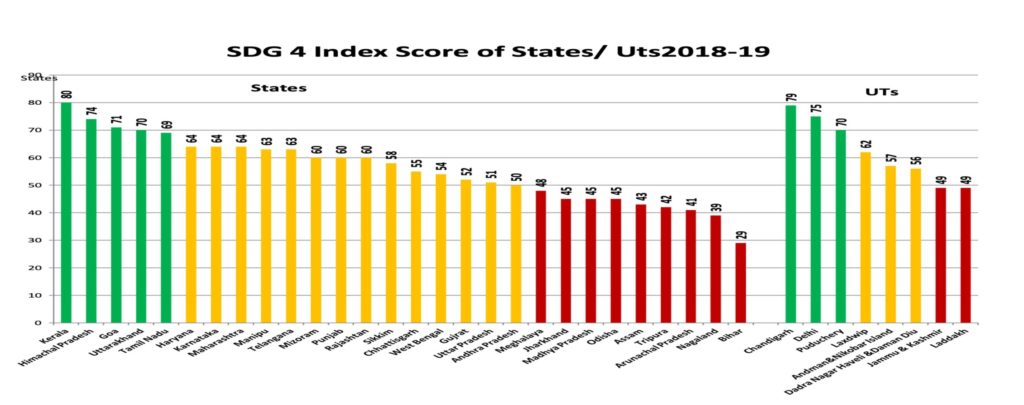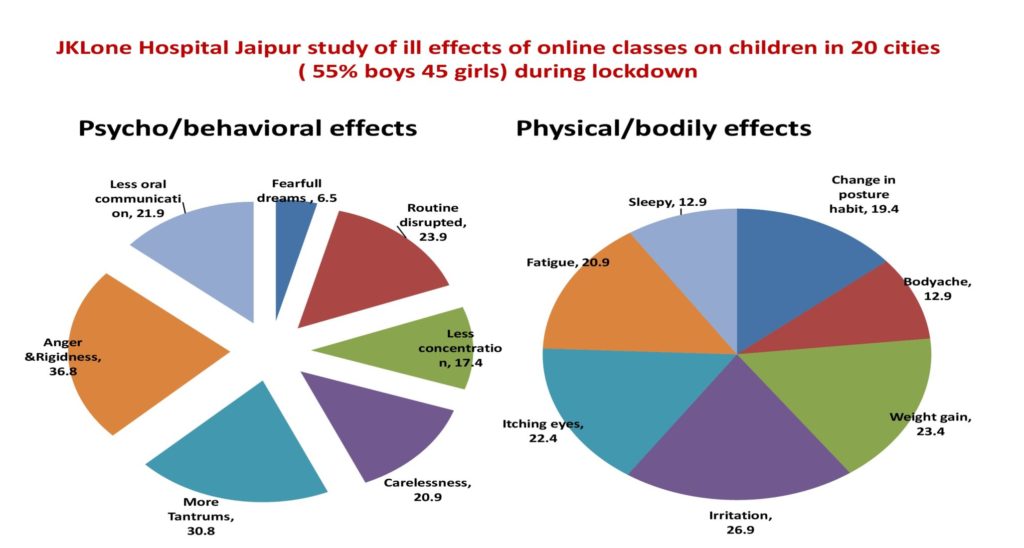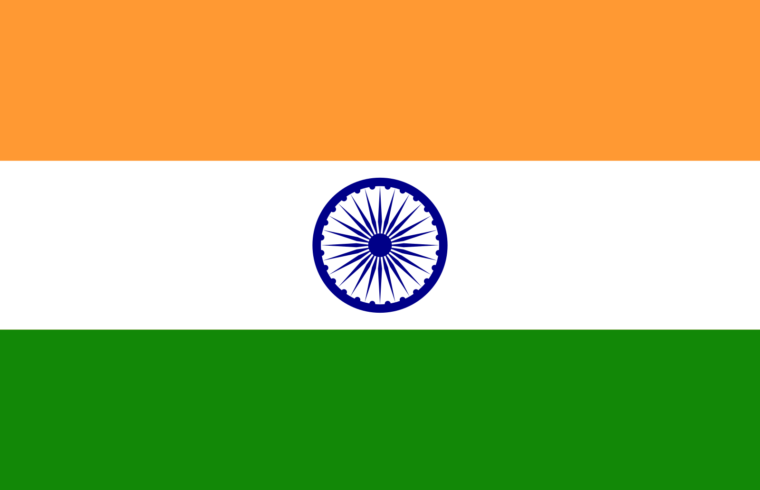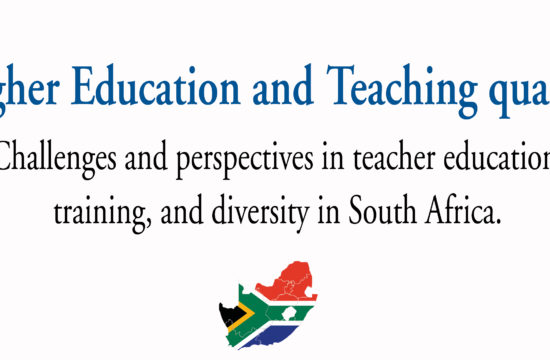Rama Kant Rai
National Coalition for Education – INDIA
The Sustainable Development targets for 2030 calls for ensuring the completion of primary and secondary education by all boys and girls, and guaranteeing equal access to opportunities for access to quality technical and vocational education for all. Policy interventions will require improving access and improving quality, as well addressing relevant obstacles which include gender inequalities, food insecurity, and armed conflict. The most challenging concern is provisioning of adequate funding to achieve SDG goal 4.
The SDG Agenda for Sustainable Development Goal 4 – ‘Ensure inclusive and equitable quality education and promote lifelong learning opportunities for all’ (hereafter referred to as “Education 2030”) – and its associated targets, to be achieved by 2030.
Needless to reiterate that SDG 4 goals are beyond school education, rather they cover technical, tertiary, University Education and lifelong learning for all. Every effort must be made to guarantee that this time the goal and targets are achieved. This requires strong political will, clear strategies, indicators, programme and resources from state.
After signing this ambitious covenant more than five years have lapsed and the progress is still sluggish in terms of policies and budgetary resources from government.
I. Progress of school education as indicated by NITI AAYOG
National Institution for Transforming India (NITI Aayog), the nodal body mandated to oversee the progress on the 2030 Agenda, has been monitoring the progress of SDG in India. NITI AYOG has prepared index of performance of SDG 4. To measure India’s performance towards the Goal of Quality Education, eleven national level indicators have been identified, which capture six out of the ten SDG targets for 2030 outlined under this Goal. These indicators have been selected based on the availability of data to ensure comparability across States and UTs.

The following table presents the composite scores of the States and UTs on this Goal. It also shows a breakdown of the States and UTs by indicator. Goal 4 Index Score SDG Index Score for Goal 4 ranges between 29 and 80 for States and between 49 and 79 for UTs. Kerala and Chandigarh are the top performers among the States and the UTs, respectively. Five States and three UTs bagged a position in the category of Front Runners (score range between 65 and 99, including both). However, nine States and two UTs fell behind in the Aspirants category (with Index scores less than 50).
II. The challenges ahead!
(1) Inadequate Education Budget 2021-22:
The budget requirement to achieve SDG 4 was supposed to be in accordance with the targets and sub-targets for next 15 years. According to the report prepared by Technology and Action for Rural Advancement (TARA- An organization assigned to make assessment of resources for SDG by UNDP) The total funds needed for India to reach SDG-4 by 2030 is USD 2,258 billion, means from 2017 to 2030 averages USD 173 billion per year (12110 billion INR), whereas current govt budget of 992.24 billion Rupees (2021-22) is too less.
Source:1. (Ecebook_forweb.pdf (avpn.asia)
2. Funding education with impact India Development Review (idronline. org)
(2) The MHRD’s budget is continuously declining. A similar trend is seen in terms of GDP. The total allocation to school and higher education in 2021-22 budget is Rs 93,2240 million against last year budget of Rs 99,3110 million in 2020-21 (BE) which was revised to Rs 85,0890 million. Thus, there is a reduction of Rs 6,0870 million from the 2020-21 budgets (BE). Thus there was a 6.1 percent decline in the allocation for education sector in today’s budget announcement.
(3) The Samagra Shiksha scheme, being the main scheme for implementing the Right to Education (RTE) Act, has faced a massive cut in the budget. While last year the scheme was allocated Rs 38,7500 million (BE), this year, it has received Rs 31,0500 million. Thus a 20% cut in the BE Budget. This cut in Samagra Shiksha budget will be counterproductive for the poor children under Right to Education Act provision.
(4) Also the National Scheme of Incentive to Girls for Secondary Education, which covers girls of SC/ST communities who pass Class VIII and enroll in Class IX in government and government-aided schools, faces a drastic cut from Rs 1100 million last year (2020-21) to just Rs 10 million in present budget.
III.Progress recorded by UDISE (Unified District Information on school education) Report 2019-20
• A total of 26.45 crore (264 Million) students were enrolled in school education from pre-primary to higher secondary in 2019-20, higher by 4.23 million compared to 2018-19. The enrolment of girls increased at all levels of school education in 2019-20 compared to 2018-19. The increase was highest in pre-primary (14.2 %). The UDISE+ 2019-20 stated that in 2019- 20, total students in school education from primary to higher secondary is a little above 250.9 million. This is higher by 2.63 million compared to 2018- 19. There is a net addition of 4.23 million students in school education in the year 2019-20 compared to 2018-19 which is higher by 1.6%.
• The number of teachers in school education increased by 2.72% in 2019- 20 compared to 2018-19. In 2019-20, 9.69 million teachers were engaged in school education, about 0.26 million higher compared to the statistics in 2018-19.
• The report has pointed out that the Gross Enrolment Ratio (GER) at all levels of school education had improved in 2019-20 compared to 2018-19.
• “The GER increased to 89.7% pc (from 87.7%) at Upper Primary level, 97.8% (from 96.1%) at Elementary Level, 77.9% (from 76.9%) at Secondary Level and 51.4 % (from 50.1%) at Higher Secondary Level in 2019-20 (from 2018-19),”.
• Between 2012-13 and 2019-20, the GER for girls at both secondary and higher secondary level has increased more than that of the boys. GER for girls at secondary level has gone up by 9.6% to reach 77.8% in 2019-20, it was 68.2% in 2012-13.
• In the infrastructure facility the report noted that more than 90% schools in India had hand-wash facilities in 2019-20. This is a major improvement, as this percentage was only 36.3 pc in 2012-13. Though there has been marked improvement in the last seven years (2012-13) when close to a quarter of the school didn’t have electricity, at present 83.4% (an improvement by almost 7% from 2018-19) does have electricity.
• DISE+ report indicates that the schools are far from disable friendly as the majority of the schools don’t have ramps with hand rails or toilets for children with special needs (CWSN).
• More than 82% schools conducted medical check-ups of students in 2019- 20, an improvement by more than 4% over the previous year, 2018-19. In 2012-13, about 61.1% of schools conducted medical check-ups for students.
• About 38.5% schools in India had computers in 2019-20, an improvement by more than 4% over the previous year and an improvement from 22.2% seven years ago, the base year cited by the report. Internet connectivity too is low at 22.3%, though a significant jump from 18.7% in 2012-13.
UDISE+ report: School education added 42.3 lakh students in 2019-20 – Times of India (indiatimes.com)
IV.Some more challenging picture: Only 39 per cent schools in the country had computers while only 22 per cent had an internet connection in 2019-20, according to the Unified District Information System for Education Plus (UDISE+).
The report also said that more than 90 per cent schools had hand-wash facility in 2019-20, a major improvement from 2012-13 when it was just 36.3 per cent.
”About 39 pc schools in India had computers in 2019-20, an improvement by more than 6 pc over the previous year. More than 22 pc schools in India had internet connectivity in 2019- 20, an improvement of more than 3.5 pc over the previous year,” the report said. During the period, more than 83 per cent schools had electricity in 2019-20, an improvement by almost 7 per cent over the previous year, 2018- 19. ”In 2012-13, about 54.6 pc schools had electricity. More than 84 pc schools in India had a library/reading room/reading corner in 2019-20, an improvement of nearly 4 pc compared to the previous year. In 2012-13, about 69.2 pc schools had library/ reading room/ reading corner,” it said. Unified District Information on School Education (UDISE), initiated in 2012-13 by the Ministry of Education by integrating DISE for elementary education and SEMIS for secondary education, is one of the largest Management Information Systems on school education covering more than 1.5 million schools, 8.5 million teachers and 250 million children.
Only 39 per cent schools in the country had computers while only 22 per cent had an internet connection in 2019-20, according to the Unified District Information System for Education Plus (UDISE+) report released on Tuesday. The report also said that more than 90 per cent schools had hand-wash facility in 2019-20, a major improvement from 2012-13 when it was just 36.3 per cent.
V.Now online/ digital education is being promoted: What does this mean for India and its people?
India has the world’s second-largest school system, after China. Shutting schools to maintain social distancing amidst the COVID-19 crisis was the most logical solution to avoid community transmission. However, this prolonged closure has a disproportionately negative impact on the most vulnerable students. The pandemic has not only caused the wide rift in educational inequality to balloon but also exacerbated existing disparities.
A total of 320 million learners in India have been adversely affected and transitioned to the e-learning industry, which comprises a network of 1.5 million schools. An NSSO 2014 report highlights that 32 million children were already out of school before the pandemic — the majority of them belonging to the socially disadvantaged class in the country.While the government endorses India as the flag-bearer of the digital revolution and acknowledges that it is a diverse and multilingual country, as supported by the recently drafted new education policy, e-learning platforms cannot replicate the various dialects, varied contexts and different lived experiences that are brought together by physical classrooms. If e-learning is the “new normal”, the policy must go further to address the feasibility of digitalization to ensure equity and quality in education.
• A total of 320 million learners in India have been adversely affected by the COVID-19 pandemic and have transitioned to e-learning;
• With huge regional and household disparities in access to the internet and technology, this transition has not been possible for all students and educators;
• The rapid shift to e-learning prompted by the pandemic has resurfaced long-standing issues of inequality and a digital divide in India that must be addressed by future economic, education and digitalization policies.
However, In a recent 2017-18 survey, the Ministry of Rural Development found that only 47% of Indian households receive more than 12 hours of electricity and more than 36% of schools in India operate without electricity. This suggests that while students from families with better means of living can easily bridge the transition to remote learning, students from underprivileged backgrounds are likely to succumb to inefficiency and a lack of adaptation, either because of the inaccessibility of the technology or the low education of their parents to guide them through tech-savvy applications.
Aside from the stresses of access and affordability, a daunting task for a student is to keep up with their studies and peers. Unlike an active classroom setting, e-learning does not accommodate one-to-one discussions or problem solving with tutors. Reports emphasize that the receivers (students) are not the only ones struggling – teachers are too. Teachers and institutions are not always trained and equipped to transition to online teaching. Many teachers are unqualified when it comes to using new technologies and interfaces.
Some disturbing facts from NSSO data:
• Only 4% of households own a computer in rural India.
• 23.4% of households own a computer in urban India.
• Less than 15% of rural Indian households have internet access.
• 42% of urban Indian households have internet access. Source: National Sample Survey Office (NSSO) 2017-18 report
• Lack of resources and skilled teachers in rural India: Now let’s focus on the infrastructure, resources and educators in rural India; the only answer we would get is the inefficiency and lack of adaptation among the educators themselves. If the teachers are not ready, then how would they prepare students?
• Increased e-learning platforms could be efficient in urban India, but still, it is far away from communicating the various dialects, varied contexts and different moral lessons that are executed in physical classrooms in an efficient way. Besides, there is a little scope for building an emotional bonding between students and educators on the e-learning platform.
• Increased screen-time is becoming a genuine threat to the physical and psychological health of the students.
• Education does not only mean learning through pen and paper mode, but education also contains sports, extracurricular activities which are not possible under the electronic platform.
E-learning is efficient to a limited extent but it should be noted that E-learning can never be the medium of the universal pursuit of knowledge. Intellectual socialization is also being compromised under E-learning.
According to the Key Indicators of Household Social Consumption on Education in India report.
Based on the 2017-18 NSSO, fewer than 15% of rural Indian households have internet access (as opposed to 42% urban Indian households). A mere 13% of people surveyed (aged above five) in rural areas — just 8.5% of females — could use the internet. Girls in vulnerable households face increased domestic duties inducing their inability to access online education either because of inadequate access to the internet and gadgets or because the male child and his teaching are prioritized. This silent exclusion of children belonging to families in distress may cause child labour and child marriage. Covid-19 fallout: The impact on education in India (msn.com)
VI. Covid-19 fallout: The impact on education in India, (India Today)
• Over 1.5 million schools across India closed down due to the pandemic
• Only 24 per cent house-holds have access to the internet, according to a 2019 government survey.
• In rural India, the numbers are far lower, with only 4 per cent households having access.
• The education ministry’s budget for digital e-learning was slashed to Rs 4690 million in 2020-21—the year Covid struck—from Rs 6040 million the previous year
VII. Extreme poverty compels marginalized children to go for bread earning: The poverty is one of the detrimental factors affecting the school education in marginalized and unorganized sector families. Here is a case which is self explanatory. In one of the govt aided schools in Allahabad district children were supposed to attend digital learning classes. While I asked the teacher as to how the digital learning is going one. She said,” Children are not able to attend the digital classes as they either don’t have smart phones or cannot afford the internet data connection.
Ashok Bind Mohan, Ramesh, Rahul (names changed) and 10 others from Daraganj (Baxi Khurd), Prayag Raj (Allahabad),UP are all between 10 to 15 years age group and are enrolled in elementary education(Grade5 to 8). Their school got closed due to lockdown from 13th March 2020. They were asked to attend digital learning from home with smart phones. They are extremely poor and parents have no job during lockdown. They don’t have smart phones and those who have cannot afford net pack (internet connectivity)
When the teacher asked as to why they are not attending the digital classes they replied,” Mam, we get up early in the morning around 3 to 4 am and in a group we rush to river for fishing. By 5 pm we collected the fishes and rush to local market and sell the fish. From the sales proceeds we purchase rice and kitchen provisions. We also bring some unsold fishes to our home. Then our mother cooks the fish and rice for entire family. By the time we eat we are too tired and go to sleep .For us digital learning is a dream which is difficult to come true.”
VII. Challenge of gender gap and out of school children and SDG 4:
The UNESCO published Global Education Monitoring Report, 2014 (GEM) states that 37% of the world’s non-literate individuals are in India. The report also suggests that 280 millions of these are just women. Literacy rates among the marginalized sections of the society are abysmally low. The literacy rate of 15+ years of rural women among Muslim women is 47.25%, 43% for SC women and a mere 37.05% for ST women. These children need special attention in school education.
Also UNESCO’s reports that shutting down of schools due to the Covid-19 pandemic comes with a warning of „potential for increased drop-out rates which will disproportionately affect adolescent girls, further entrench gender gaps in education and lead to increased risk of sexual exploitation, early pregnancy and early and forced marriage“.
UNESCO has called for policy-makers and practitioners to look into lessons from the past crises to address the challenges faced by girls as the governments of various counties prepare for „indefinite“ school closures.
As per Ms Protiva Kundu’s article “The gender divide in internet usage is also stark.” As per the Internet and Mobile Association of India report, in 2019, while 67% men had access to internet, this figure was only at 33% for women. The disparity is more prominent in rural India, where the figures are 72% and 28% for men and women, respectively”
VIII. Adverse effects marring education of poor children:
Mobile addiction to behaviour change: Effects of lockdown on children (jagran.com).The survey reveals that as high as 65.2 per cent students reported physical problems, 23.40% gained weight, 26.90% suffered headache/ irritability and 22.40% had reported eye pain and itching.(Publish Date: Sun, 05 Jul 2020)
Effects of lockdown on children are surely manifesting in a very ugly and unpleasant way. A recent sample survey reveals that around 65% children were found to be addicted to their devices, mostly mobile phones. When asked to leave their devices these children expressed anger, cried, didn’t listen to their parents, showed irritable behaviour. They were unable to stay away from the device even for half an hour.
A study was carried out by physicians at JK Lone Hospital in Jaipur on 203 children to study the impact of the COVID-19 lockdown. It was conceived by Dr Ashok Gupta, Medical Superintendent & Senior Professor, Department of Pediatrics.
The survey reveals that as high as 65.2 per cent students reported physical problems, 23.40% gained weight, 26.90% suffered headache/ irritability and 22.40% had reported eye pain and itching. 70.70% students with high screen exposure during the lockdown days have behavioural problems, 23.90% skipped their daily routines, 20.90 per cent became careless, 36.80 per cent became stubborn and 17.40% reported a reduced attention span. It was concluded that after the lockdown almost all the children had a screen time increase of 2-3 times (5 hours/day from 2 hours/day) which reduced their physical activity.
About 50% of these children had difficulty in sleeping after going to bed for 20 to 60 minutes and 17% of the children wake up in the middle of their sleep at night and take 20 to 30 minutes to get back to sleep. They also suffered daytime sleepiness, daytime tiredness, headache and irritability, weight gain, change in body and back pain and changed toilet habits. See the graphic below:
IX. Effect on Unorganized sector:
COVID-19 crisis can push 40 crore informal sector workers in India deeper into poverty: ILO – The Economic Times (indiatimes.com).
COVID-19 crisis can push 400 Million informal sector workers in India deeper into poverty: ILO
Vovid-19 has badly affected the informal sector in India.“The COVID-19 crisis has the potential to push around 40 crore informal sector workers in India deeper into poverty, with the lockdown and other containment measures affecting jobs and earnings, an International Labour Organisation (ILO) report.
„COVID-19“ is already affecting tens of millions of informal workers In India.
In India, with a share of almost 90 per cent of people working in the informal economy, about 400 million workers in the informal economy are at risk of falling deeper into poverty during the crisis.
„Current lockdown measures in India, which are at the high end of the University of Oxford’s COVID-19 Government Response Stringency Index, have impacted these workers significantly, forcing many of them to return to rural areas,“ it said.
„They are less equipped to prepare for and respond to COVID-19 as access to basic services, especially health and sanitation, is limited; decent work, social protection and safety at work are not a given; their institutions are weak; and social dialogue is impaired or absent,“ it added.

Recommendations:
1. SDG4 and Education for all should remain the sole and final responsibility of the governments and should not be given to private sector.
2. The online education will not be able to be an alternative of regular schooling and should not be an instrument to school closure.
3. There should be open consultations with teachers Unions, Civil society organizations, media and academicians regarding the FDI and ECB govt decision to open education for profit.
4. The role of govt should be to strengthen our public education system rather than handing over the governance to private and overseas players as in case of STARS project.
5. Remove the proposal for piloting engagement of non-state actors in education including handing over of government schools, outsourcing of services, engagement of management firms and school vouchers since many of these measures have been attempted in the past and failed.
6. Prioritize developing State capacity and innovation within the public sector in order for change to be sustainable. This requires (a) less reliance on non-state actors, (b) freedom and untied funds for SCERTS, DIETs, etc., (c) sufficient human resources
7. Include a strong focus on equity and focus on Dalit, Adivasi, poor, dropout and child labour girls, and Minority communities to redress age old inequality and discrimination.
8. Strengthen social accountability in education through building clear mechanisms for strengthening the voice of parents, statutory structures for community participation (SMCs) and local self-governance structures.
9. No outsourced private agency should be assigned the school and teachers assessment.
*The author can be contacted at
cosar.lko@gmail.com, +91 7011255324









